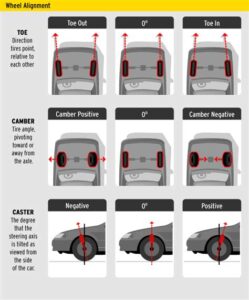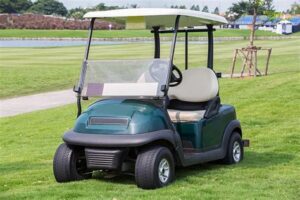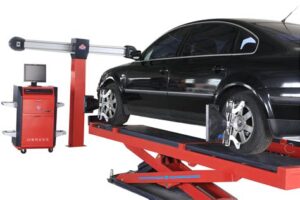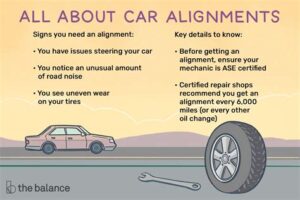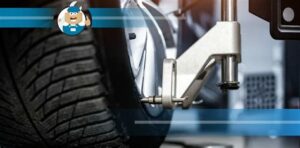How to Align Model Car Wheels
When it comes to model car performance, wheel alignment plays a crucial role in ensuring optimal handling, speed, and overall enjoyment. Whether you’re a seasoned enthusiast or a newcomer to the hobby, understanding how to align your model car wheels can significantly enhance your driving experience. This guide will explore the fundamentals of wheel alignment, helping you identify misalignment issues and equipping you with the right tools and techniques to achieve precision. We will walk you through a straightforward, step-by-step process, highlight common mistakes to watch out for, and address frequently asked questions to further refine your skills. Get ready to unlock the full potential of your model car with the proper alignment techniques!
Understanding The Basics Of Model Car Wheel Alignment
Aligning model car wheels is crucial for ensuring optimal performance and realism. When the wheels are misaligned, it can lead to uneven wear, poor handling, and unsatisfactory aesthetics. Understanding the basics of wheel alignment helps model car enthusiasts maintain their cars and improve their experience. Here are the key aspects to consider:
- Camber: This refers to the angle of the wheel in relation to the vertical axis of the vehicle. A wheel tilted inward at the top has negative camber, while one tilted outward has positive camber. Proper camber enhances grip and can affect tire wear over time.
- Toe: Toe alignment deals with the direction the wheels point in relation to the centerline of the car. If the front of the wheels bent inward, it’s termed ‘toe in’; if they point outward, it’s ‘toe out’. Adjusting toe is essential for ensuring straight tracking and minimizing tire wear.
- Kingspin Inclination: This is the inward tilt of the steering axis when viewed from the front. Proper kingspin inclination allows for better stability and smoother steering response.
- Track Width: The distance between the centerlines of the left and right wheels on the same axle. An incorrect track width can disrupt the vehicle’s balance and handling.
By mastering these basic concepts, you will be better equipped to perform proper alignments and ensure that your model car operates smoothly. The next step involves identifying any misalignments, which will lead to effective adjustments. Always remember that a well-aligned model car not only looks better but also enhances your driving experience. Make sure to follow the best practices and guidelines as you learn how to keep your model car wheels perfectly aligned.
How To Identify Misaligned Wheels In Your Model Car
Identifying misaligned wheels in your model car is crucial for ensuring optimal performance and realism. Here are some signs and methods to help you determine if your model car wheels are misaligned.
- Visual Inspection: Start with a thorough visual inspection of your model car. Look for uneven gaps between the wheels and the body of the car. If one wheel appears closer to the body than the others, it may be misaligned.
- Check Wheel Movement: Gently rotate each wheel by hand. If you notice that some wheels rotate more freely than others or appear to wobble, it could indicate misalignment.
- Testing on a Flat Surface: Place your model car on a flat surface and observe its movement. If the car veers to one side or does not move in a straight line, the wheels might be misaligned.
- Tread Wear: If your model car features rubber tires, check for uneven tread wear. A wheel that is not aligned correctly can lead to abnormal wear patterns on the tire.
- Use a Wheel Alignment Tool: For more precision, consider using a wheel alignment tool specifically designed for model cars. This tool can help you obtain exact measurements to determine if your wheels are aligned.
By following these methods, you can easily identify misaligned wheels in your model car, ensuring that you can proceed with the necessary adjustments and enjoy smooth operation.
Tools You Need For Aligning Model Car Wheels Effectively
To successfully align the wheels of your model car, you’ll need a set of essential tools that can help ensure precision and accuracy during the process. Here is a list of the key tools you should have on hand:
- Wheel Alignment Tool: This specialized tool helps you measure the angles of the wheels and ensure they are set to the correct specifications.
- Calipers: Useful for measuring the distance between the wheels and adjusting them as necessary.
- Screwdrivers: A set of Phillips and flathead screwdrivers will help you tighten or loosen screws when adjusting wheel positions.
- Pliers: Use pliers for holding and manipulating small components that are often difficult to manage with fingers alone.
- Torque Wrench: Requires precise torque to ensure all components are tightened correctly without stripping screws.
- Ruler or Measuring Tape: Essential for measuring distances and ensuring symmetrical alignment of the wheels.
- Suspension Adjustment Tools: Depending on your model car, tools for adjusting the suspension (like wrenches or hex keys) might be necessary to achieve the correct alignment.
With these tools, you’ll be well-equipped to learn how to align model car wheels effectively, ensuring a smoother performance and enhancing the overall look of your model.
Step-By-Step Guide On How To Align Model Car Wheels
Aligning model car wheels is essential to ensure optimal performance and longevity of your vehicle. Follow this straightforward how to guide to achieve precision in your wheel alignment.
Step 1: How to Prepare Your Workspace
Find a clean, flat surface where you can work comfortably. Make sure you have sufficient lighting for detailed tasks and keep all your tools organized and within reach.
Step 2: Inspect Your Wheels
Before making any adjustments, closely examine your wheels. Look for signs of damage or wear that could affect alignment. Ensure tires are properly inflated as this can influence alignment readings.
Step 3: Set Up Your Model Car
Place the model car on a level surface. If possible, use a wheel alignment tool or jig to hold the car steady while you work. This ensures consistent measurements.
Step 4: Measure Current Alignment
Use a ruler or caliper to measure the distances between the wheels at the front and back. Note the measurements; this will help you determine how much adjustment is needed.
Step 5: Adjust the Alignment
Loosen the adjustment screws or nuts responsible for the alignment. For toe adjustments, turn the adjustment mechanism until the wheels are parallel. For camber adjustments, tilt the top of the wheel inward or outward as necessary.
Step 6: Recheck Measurements
Once adjustments are made, re-measure the distances between the wheels. Ensure they are aligned according to the specifications recommended for your model.
Step 7: Tighten Everything Back
After confirming that your wheels are aligned, securely tighten all screws and nuts to prevent any movement during operation.
Step 8: Test Drive
Take your model car for a test drive. Observe its handling and stability to ensure everything is in order. Make additional adjustments if necessary.
By following this how to guide, you can achieve precise alignment of your model car wheels, leading to enhanced performance and a more enjoyable driving experience.
Common Mistakes To Avoid When Aligning Model Car Wheels
When learning how to align model car wheels, several common pitfalls can be easily avoided. Recognizing these mistakes can save you time, effort, and possibly even the integrity of your model car. Here are some of the most frequent errors to be aware of:
| Mistake | Description | Consequence |
|---|---|---|
| Skipping the Measurements | Failing to take initial measurements before starting the alignment process. | Can lead to incorrect adjustments, resulting in poor handling. |
| Not Using the Right Tools | Using unsuitable or improvised tools for wheel alignment. | Inaccurate adjustments can cause further misalignment. |
| Overtightening Components | Applying too much force when tightening the wheel components after alignment. | This can warp parts and lead to more issues down the line. |
| Ignoring Suspension Issues | Not addressing underlying problems in the suspension system before aligning. | Misalignment can reoccur quickly if suspension issues aren’t fixed first. |
| Forgetting to Test Drive | Neglecting to test drive the model after aligning the wheels. | May miss out on noticeable handling issues that need further adjustments. |
By being mindful of these mistakes, you can enhance your skills on how to align model car wheels effectively. This will not only improve the performance of your model car but also extend its lifespan, ensuring a more enjoyable hobby experience.
Frequently Asked Questions
Why is it important to align model car wheels?
Properly aligned wheels ensure better performance, stability, and appearance of your model car.
What tools do I need to align model car wheels?
You typically need a wheel alignment tool, ruler or caliper, and possibly a set of hex wrenches for adjustments.
How can I tell if my model car wheels are misaligned?
Signs of misalignment can include uneven tire wear, the car pulling to one side, or visible gaps between the wheels and the body.
What are the steps to align model car wheels?
Begin by ensuring the chassis is level, check wheel angles with a ruler, make necessary adjustments, and then recheck the angles.
Can I align model car wheels without advanced equipment?
Yes, you can align wheels using simple tools like a ruler and by making adjustments manually, although precision tools can help.
How often should I check the alignment of my model car wheels?
It’s a good practice to check wheel alignment before and after racing or whenever you notice performance issues.
Are there different alignment patterns for different types of model cars?
Yes, the alignment may vary depending on the type of model car, such as on-road vs off-road models, and their design specifications.
